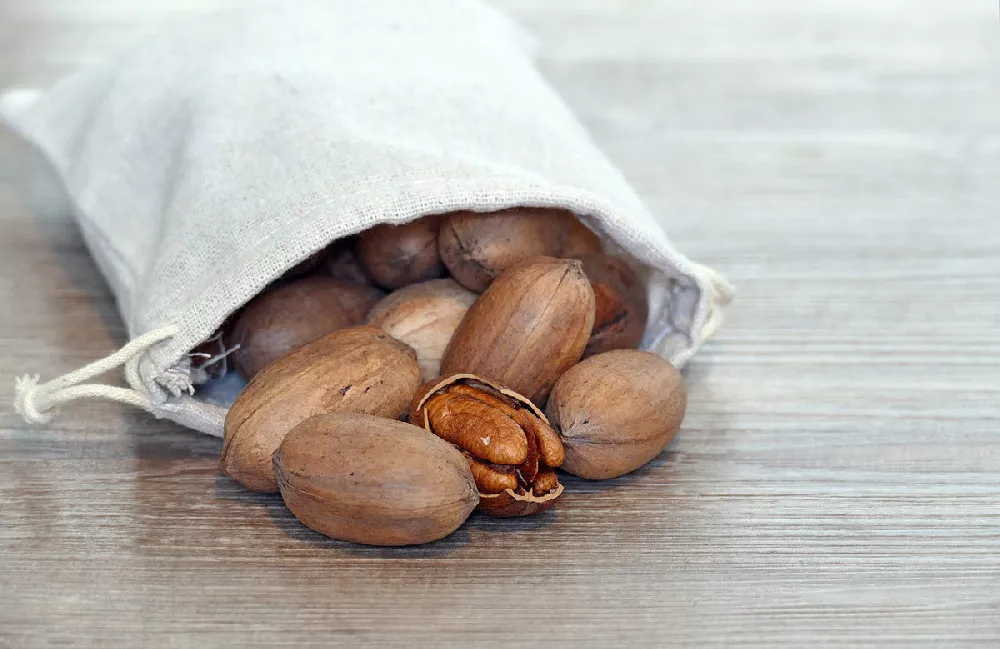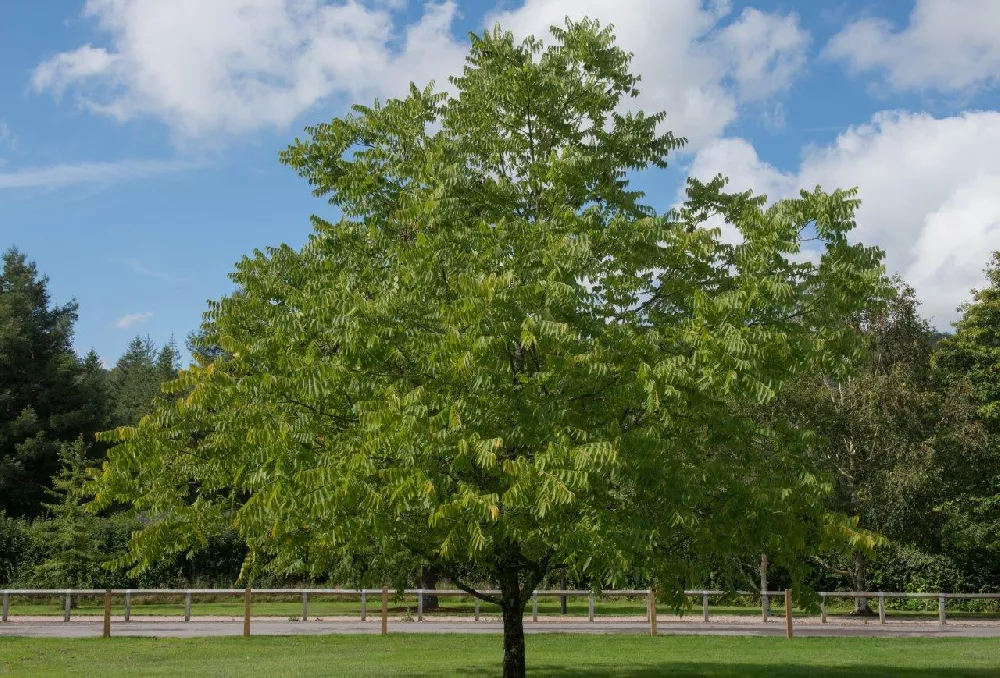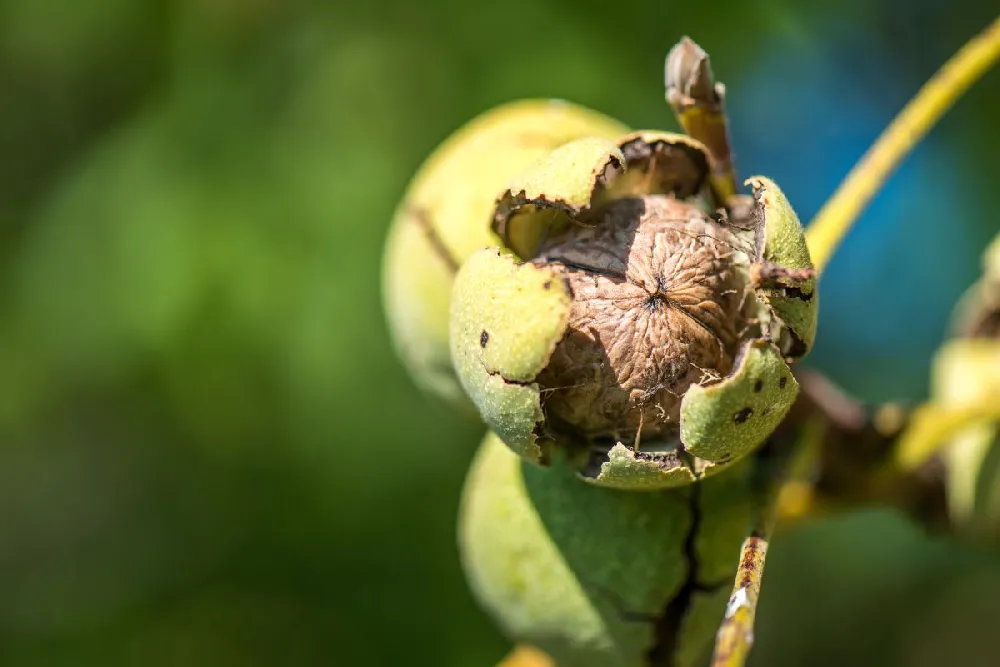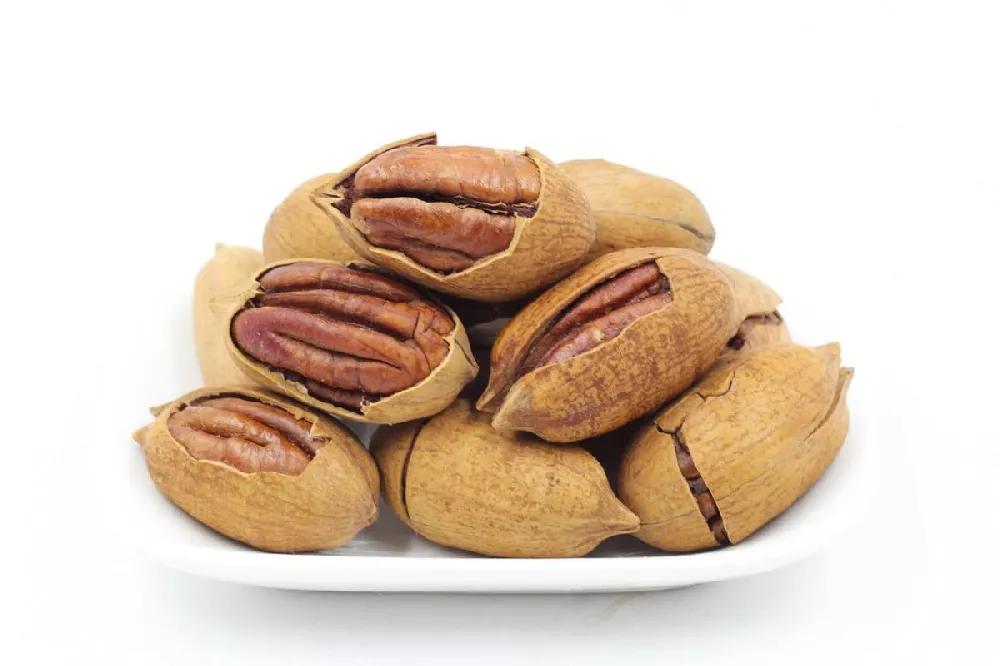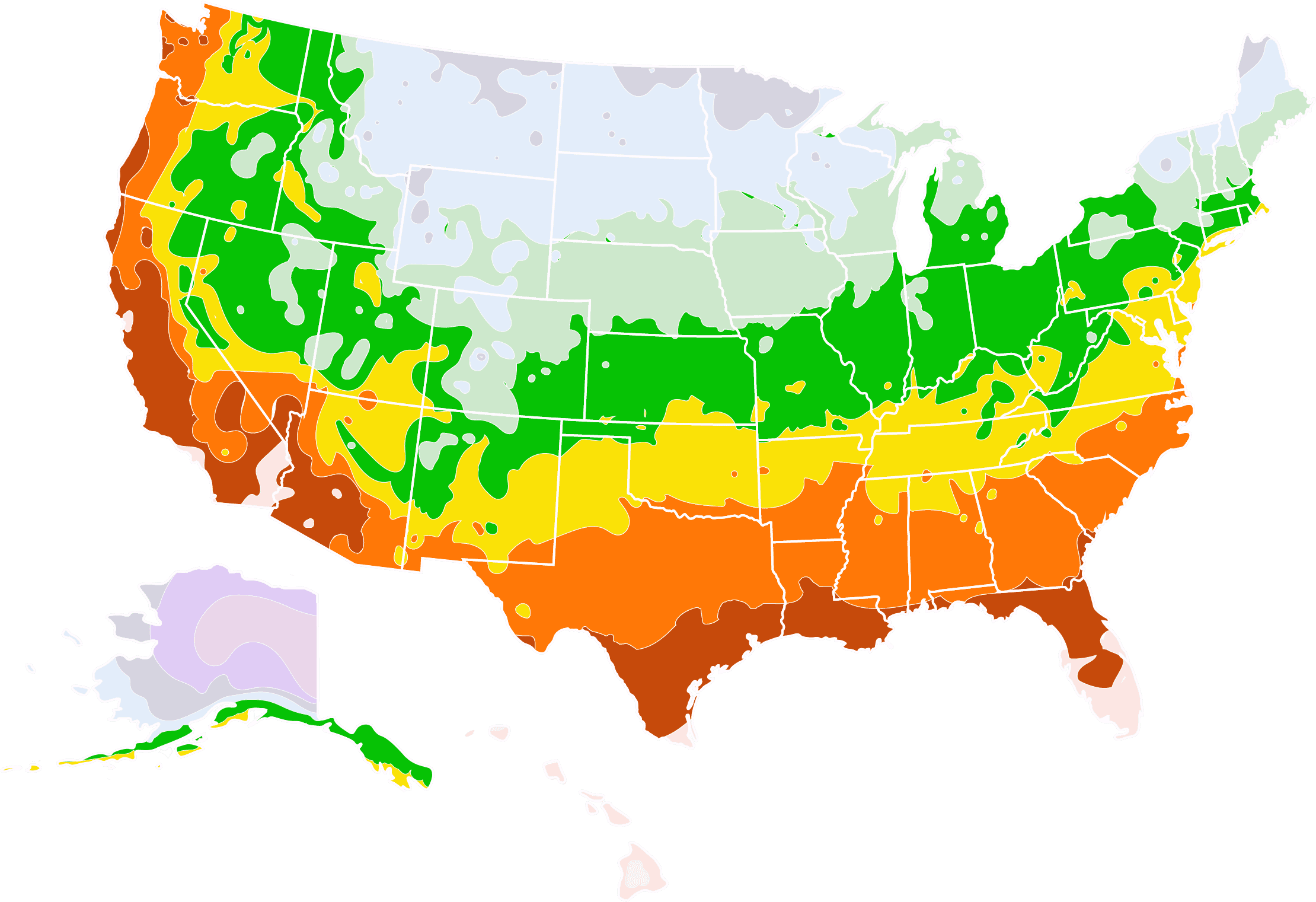- Home >
- Nut Trees >
- Pawnee Pecan Trees
Pawnee Pecan Trees for Sale - Buying & Growing Guide
The Pawnee pecan tree is one of the most popular pecan varieties in America. It’s a medium-sized tree with high-quality, large nuts. You can expect to harvest pecans at the end of September into the beginning of October. Here are some other characteristics of Pawnee pecan trees:
- Produces large, delicious pecans.
- More compact in size than other sprawling pecan trees.
- Is the leading producer in the pecan market.
Enter your zip code to find nearby stores that may carry this plant.
Plant Care
Sunlight

Will grow in both full sunlight and partial shade conditions. However, six or more hours of light is ideal.
Watering
Keep soil moist at all times by giving water every three to four days.
Fertilizing

Enjoys a nitrogen-rich fertilizer. Only apply fertilizer to this tree during the spring.
Planting and Care
Planting instructions
Pawnee pecan trees require full sun for optimal growth and seed production. They also need plenty of space to spread in the coming years. It’s also important to keep your Pawnee pecan tree away from other plants. Like a few other nut trees, this species uses a process called allelopathy to produce toxins that kill any plants close enough to compete for nutrients. Once you have found the right location, start by digging a hole as deep as the root ball and double the width. Using a shovel, loosen the soil around the hole and remove all debris. Place your tree in the hole so that the root flare remains at or slightly above ground level. Backfill and tamp the soil lightly and water thoroughly. Spread a layer of mulch around the base of the tree without covering the root flare to retain soil moisture.
Watering and nutrients
Pecan trees are a thirsty species, and the Pawnee variety is no exception. The tree requires large amounts of water to thrive. Be sure to keep your soil moist, but not soggy. Keep a two to three-inch layer of mulch around the tree, especially during the warmer parts of the year. If the topsoil is ever dry to a depth of three or more inches, give your pecan tree a thorough watering. An annual application of fertilizer with plenty of nitrogen and potassium is recommended — nut production will suffer without a full range of nutrients.
Pollination
Pawnee pecan trees are not self-fertile like some varieties. Pecan trees have both female and male flowers on the same tree, but they bloom at different times. You will want to plant another variety if you want your tree to successfully pollinate and fruit. Most importantly, the bloom periods of the two varieties must overlap. Pawnee pecan trees will perform well when planted with the ‘Pabst’ and ‘Schley’ varieties, although this will depend on your region and climate.
Pruning
Pawnee pecan tree pruning should be performed in early spring or early autumn. Be sure to have a pair of sharp and sterile pruning shears on hand. Cut branches where they meet the trunk or the next largest branch to help the plant recover quickly. Stand back a good distance away from your tree to help map out where to prune. Always focus on removing dead, dying, and diseased branches to make way for healthy new growth.
Pests and diseases
There are a variety of diseases and pests that attack pecan trees. These may vary depending on year-to-year conditions like weather, the overall health of the trees, and the specific variety of pecan. Pecan scab is a notable disease that causes the most economic trouble for tree farmers. The fungal infection can be remedied through the use of fungicides and proper sanitation. If you notice pests like the pecan weevil or the hickory shuckworm, try target-spraying the infected trees with an insecticide.
Harvesting
Pawnee pecan trees produce a large nut that fruits inside of its shell. Harvest season may occur anytime between September and November. You will know the nuts are ready to harvest when they start to break out of their hull, with some dropping to the ground. Be sure to pick them up before birds or pests do. To harvest, you can place a large sheet or bucket underneath the tree and poke the nuts with a long stick.
FAQs
How fast does a Pawnee pecan tree grow?
Pawnee pecan trees grow at a steady pace of one to two feet per year as long as they get the specific growth requirements they need. The trees will take a while to mature, so they require a patient gardener to care for them.
How long does it take for a pecan tree to produce?
A variety of factors will affect when your pecan tree begins to produce nuts. Grafted trees are known to produce earlier, as they are able to skip many of the immature stages of growth. These grafted trees may start to put off pecans as early as six or seven years after planting. Non-grafted trees may take upwards of 10 years to begin offering a harvest of pecans. Your soil quality will also play a big role, as healthier, stronger trees will begin producing earlier.
When is the best time to plant a pecan tree?
Pecan trees prefer to be planted in the late winter as long as the ground is soft enough to dig. This allows the trees to establish their roots and prepare for a productive first summer. If your climate experiences deep freezes over winter, you may want to apply a thick layer of mulch near the tree to protect its roots from damage. Planting in the early spring is also acceptable, as long as your soil is thawed and workable. The roots need light and loose soil to properly grow and expand.
Are Pawnee pecans edible?
After harvesting, you will need to let your pecans dry completely. Do this by spreading them out and allowing air to circulate. In addition, you can set up a small fan to speed up the process. The drying stage may take up to two weeks for the nuts to fully cure. Afterward, refrigerate or freeze the nuts to extend their storage life — keeping the pecans in their shells will also make them last longer. If stored properly, pecans will survive in a freezer for years.
Compare Similar Products
Customer Reviews
 nut tree
nut treeso far it looks full and beautiful
